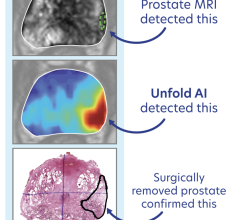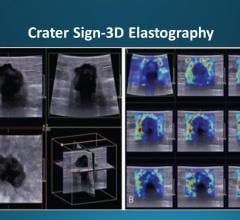
May 9, 2018 – The U.S. Preventive Services Task Force (USPSTF) posted a final recommendation statement and evidence summaries on screening for prostate cancer. This final recommendation provides clinicians and their patients with important new information about the benefits and harms of prostate-specific antigen (PSA)-based screening.
Based on a review of the evidence, the task force recommends that men ages 55 to 69 make an individual decision about whether to get PSA-based screening for prostate cancer. Before deciding whether to be screened, men should discuss the potential benefits and harms of screening with their clinician, their specific clinical circumstances and incorporate their values in the decision. This is a C recommendation. For men age 70 and older, the potential benefits do not outweigh the harms, and these men should not be routinely screened for prostate cancer. This is a D recommendation.
This final recommendation applies to all adult men who have no signs or symptoms of prostate cancer and who have never been diagnosed with the disease. It includes men at increased risk, such as African American men and men with a family history of prostate cancer.
“Prostate cancer is one of the most common cancers to affect men and the decision whether to be screened is complex,” said task force vice chair Alex H. Krist, M.D., M.P.H. “Men should discuss the benefits and harms of screening with their doctor, so they can make the best choice for themselves based on their values and individual circumstances.”
The PSA test measures the amount of prostate-specific antigen, a type of protein, in a man’s blood. An elevated PSA level may be caused by prostate cancer, but it could also be caused by other conditions, such as an enlarged prostate or inflammation of the prostate. PSA-based screening and the prostate biopsies used to follow-up on high PSA levels cannot tell for sure which cancers are likely to be aggressive and spread, and which will grow so slowly that they will never cause any problems. As a result, most men receive surgery or radiation to treat their prostate cancer and many of these men do not benefit from the treatments. In fact, they may even be harmed by them. For this reason, the task force stresses that men who are considering screening should understand that is has both potential benefits and potential harms.
“For men who are more interested in the small potential benefit and willing to accept the potential harms, screening may be the right choice for them,” said task force vice chair Douglas K. Owens, M.D., M.S. “Men who place more value on avoiding the potential harms may choose not to be screened.”
The task force found that the net benefit of screening is small for some men. There is new evidence that screening men aged 55 to 69 can reduce the risk of metastatic cancer and reduce the chance of dying from prostate cancer. There is also new information on active surveillance — a way of monitoring prostate cancer that may allow some men with low-risk prostate cancers to delay or, in some cases avoid, treatment with radiation or surgery. Active surveillance has become a more common choice for men with lower-risk prostate cancer over the past several years and may reduce the chance of overtreatment.
The benefits of screening for prostate cancer may be realized years after treatment, while the harms may occur often and consistently throughout the rest of a man’s life. The harms resulting from screening may include:
- False-positive results, which often lead to immediate, additional testing and years of additional close follow-up, including repeated blood tests and biopsies;
- Overdiagnosis, which is the diagnosis of prostate cancer in some men who would not have experienced symptoms during their lifetime; and
- Potential harms related to treatment, which commonly include erectile dysfunction and urinary incontinence.
The task force’s recommendation statement also contains specific sections that address men at increased risk — including African American men and patients with a family history — by providing more information for these men and their clinicians to consider as they make decisions about screening. Specifically, clinicians should inform their African American patients about their increased risk of developing and dying from prostate cancer, as well as the potential benefits and harms of screening. Clinicians should also speak to men with a family history of prostate cancer about their increased risk of developing the disease. This is particularly important for men whose father or brother was diagnosed at a younger age or died from prostate cancer.
The task force’s draft recommendation statement and draft evidence reviews were posted for public comment on the task force Web site from April 11, 2017, to May 8, 2017.
Read the full final recommendation statement here.
For more information: www.uspreventiveservicestaskforce.org


 July 24, 2024
July 24, 2024 








